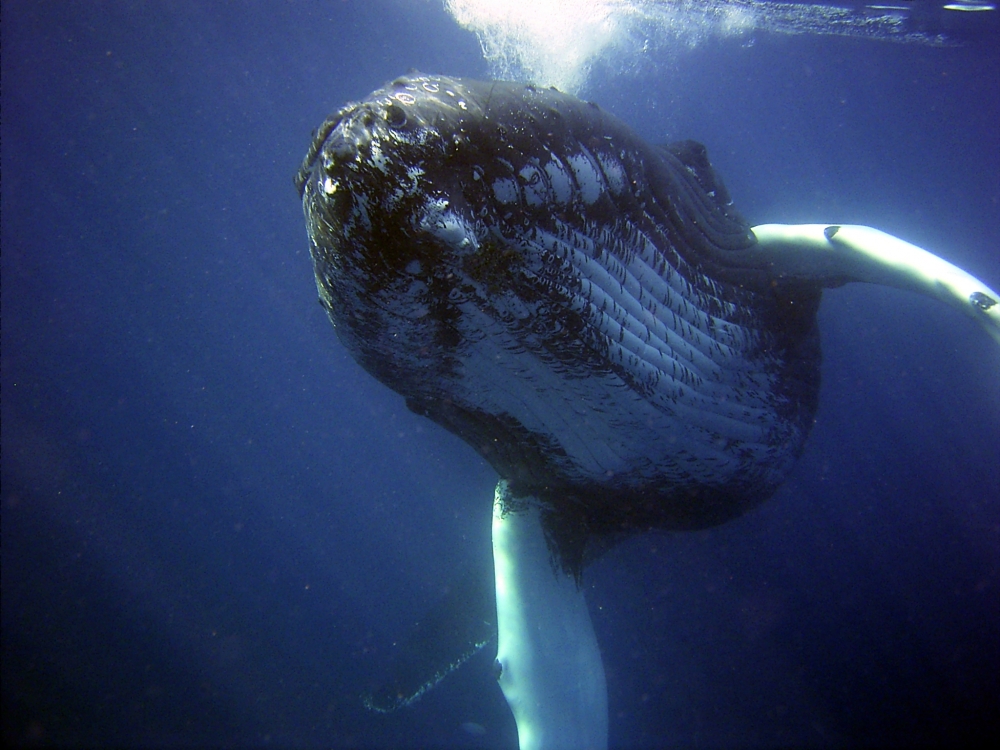Protecting the High Seas


Often considered desolate, remote, unalterable places, the high seas are, in fact, hotbeds of activity for both people and wildlife. Technology has enabled more human activity in areas once difficult to reach, and that in turn has brought a growing presence of industries such as fishing, mining and transportation in international waters — the ocean beyond 200 nautical miles from any coast.
This increase is cause for concern to people like UC Santa Barbara researchers Douglas McCauley, Morgan Visalli and Benjamin Best, who are interested in the health and biodiversity of the oceans. That no nation has jurisdiction over international waters has, at least historically, made regulation very difficult and puts sensitive and essential ocean habitats and resources at risk.
“The high seas are the planet’s last global commons,” said Visalli, a marine scientist at the Benioff Ocean Initiative at UC Santa Barbara. “Yet marine life and resources on the high seas are at risk of being overexploited and degraded under the current fragmented framework of management. The world needs and deserves a comprehensive legal mechanism to protect high seas biodiversity now and into the future.”
So when the United Nations turned its efforts toward negotiating the first global high seas treaty for “the conservation and sustainable use of marine biological diversity of areas beyond national jurisdiction,” the scientists leapt at the chance to put their expertise to work. To kickstart this research, ocean scientists and high seas experts from 13 universities and institutions gathered in a series of workshops held at UC Santa Barbara. Together the team developed a standardized, data-driven strategy to identify hotspots of biodiversity potentially deserving of protection in the high seas.
“One of the goals of these United Nations negotiations is to develop a pathway for the establishment of marine protected areas in the high seas,” said Visalli. “This creates an incredible opportunity to leverage new global data assets and data-driven planning tools to identify areas of the high seas that have outstanding conservation value and could be considered high priority areas for spatial protection.”
The researchers’ results are published in a paper in the journal Marine Policy.
Location, location, location
Marine protected areas — designated parks in the sea where special measures are taken to protect biodiversity — are among the most powerful and effective tools marine scientists and managers have at their disposal to look after marine biodiversity, maintain ocean resiliency and enhance the productivity of fishery resources that operate just outside of these parks.
But to get the most out of marine protected areas, they need to be put in the right places. Researchers in this collaboration used big data and an optimization algorithm to try to balance the benefits of protecting certain locations with high biodiversity against costs, such as the loss of fishing in that area. Their aim was to find win-win solutions for the possible placement of these high seas protected areas.
“It is a historic moment for our ocean,” said McCauley, a professor of ecology at UC Santa Barbara and director of the Benioff Ocean Initiative. “Places like New York City, that famously included parks for nature and people in their zoning plans before things got busy, have benefited immensely from that foresight. This is our Central Park moment for the high seas.”
The researchers took more than 22 billion data points organized into 55 layers that included information on conservation-related factors such as species diversity, ocean productivity, threatened species and fishing in locations across the high seas, which cover about two-thirds of the global ocean. They also future-proofed their analysis by including data layers describing the predicted diversity of species in a future ocean altered by climate change.
“This is important because climate change is rapidly altering our oceans,” McCauley said. “Our approach illustrates one way to protect the biodiversity oases of both today and tomorrow.”
Each hotspot identified in this analysis was special for its own unique reasons. The research highlighted, for example, the Costa Rica Dome, a dynamic nutrient rich region that attracts endangered blue whales and leatherback sea turtles; the Emperor Seamount Chain, a string of extinct underwater volcanoes that are home to some of the oldest living corals; and the Mascarene Plateau, an area in the Indian Ocean that has the largest contiguous seagrass meadow in the world and provides habitat for many globally unique species. These and other notable biodiversity hotspots across the globe could constitute the critical mass needed to achieve long-term marine sustainability goals, according to the study, and are worthy of consideration as the first generation of high seas marine protected areas.
The Home Stretch
Decades in the making and nearly close to completion, the high seas treaty negotiations were set to embark on their fourth round this month, but have been postponed due to the COVID-19 pandemic. Preliminary results from this exercise were presented by UC Santa Barbara scientists at the United Nations during the third negotiation session for the treaty last August.
This analysis, the researchers say, disproves the misconception that there is not enough good data about biodiversity in the high seas to strategically plan for high seas protected areas.
“We have high hopes,” McCauley said. “We hope that the United Nations will indeed deliver a strong treaty later this year that includes measures to set up these new international ocean parks. And that science-based analyses, such as these, give them confidence that researchers and experts stand ready to help them strategically put these parks in smart places that will maximize the benefits that these parks will yield for people and nature.”







